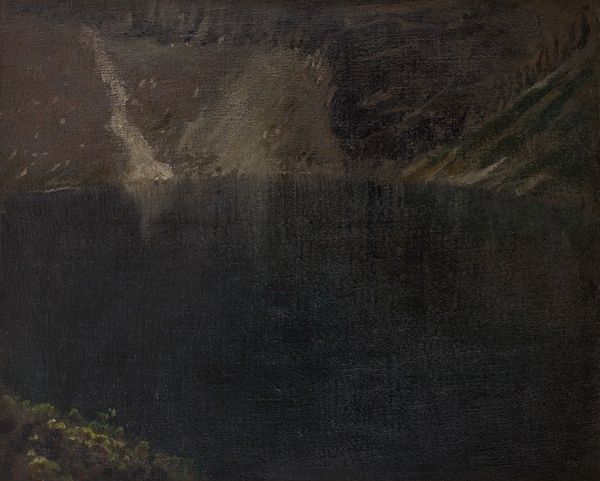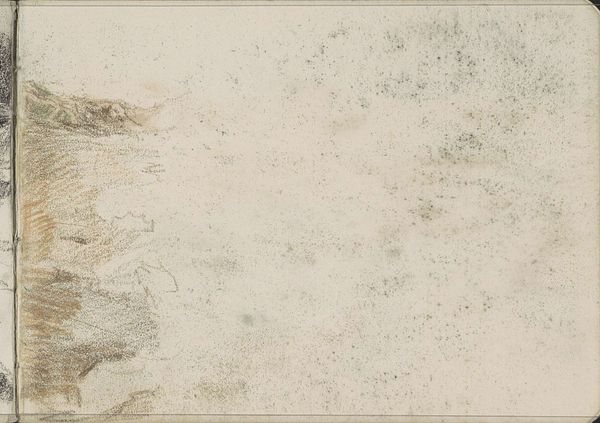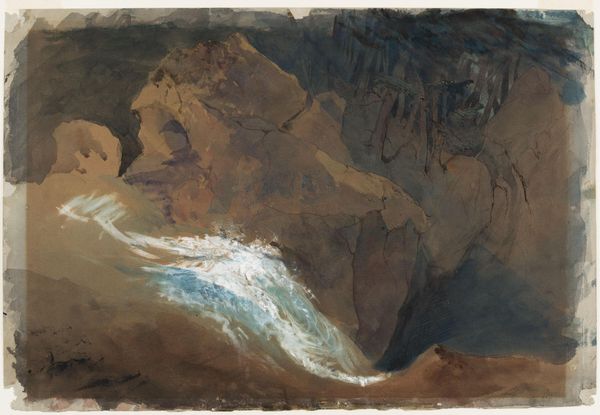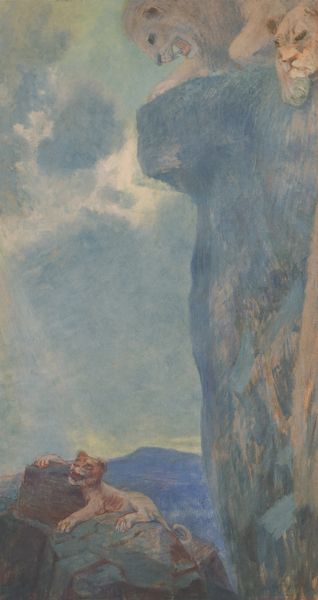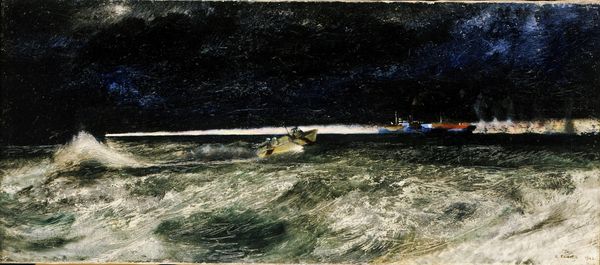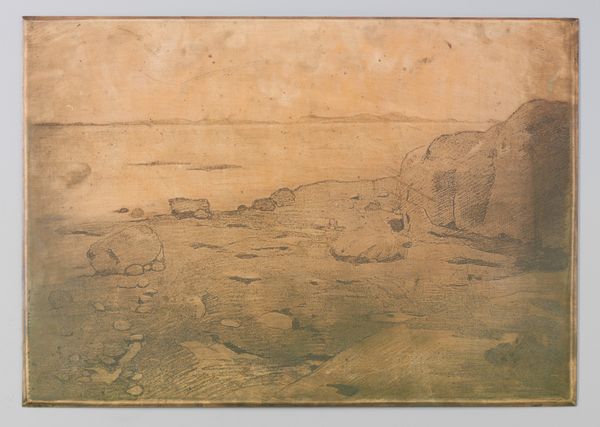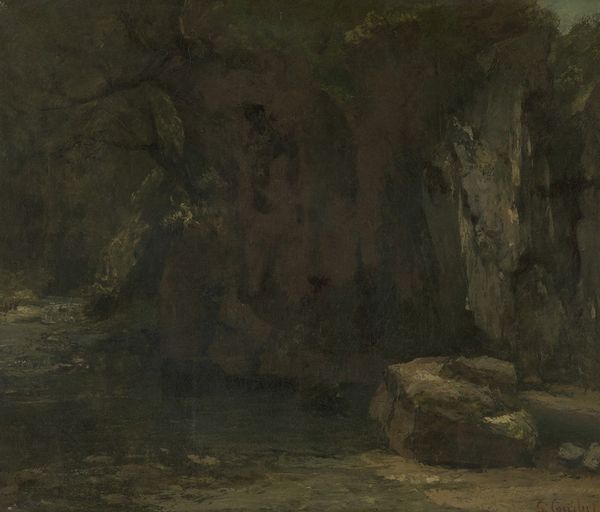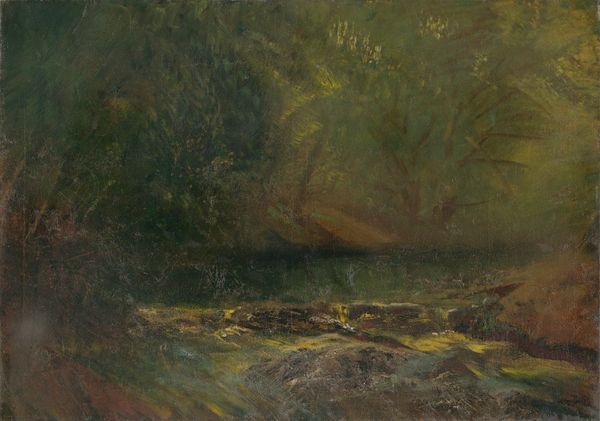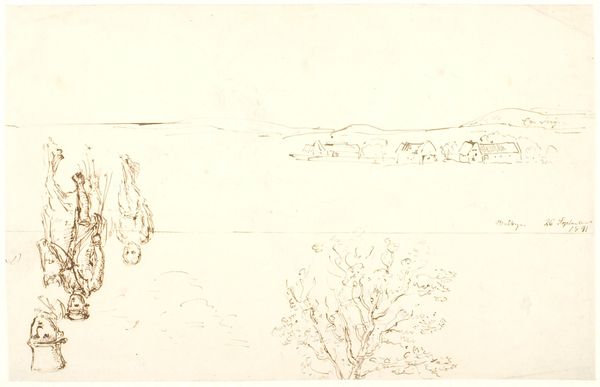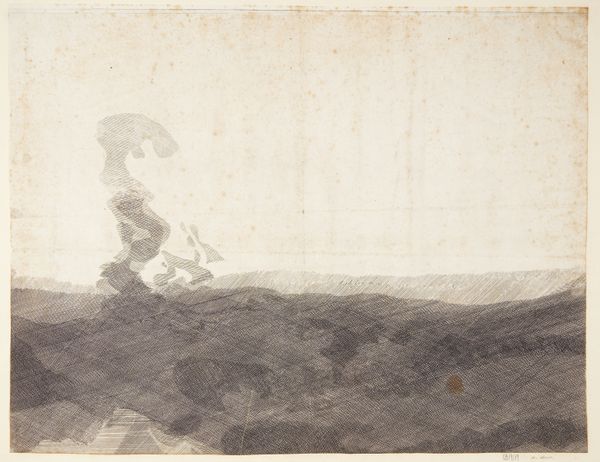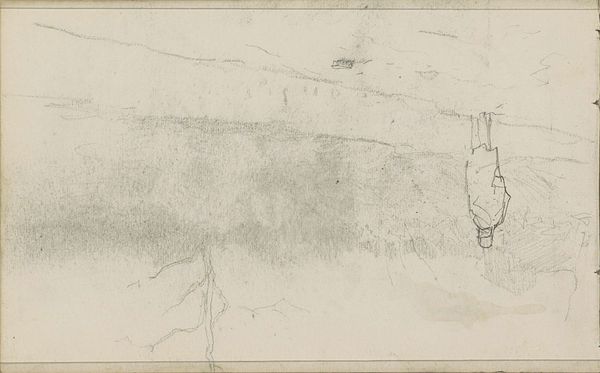
Dimensions: Sheet: 12 in. × 18 1/4 in. (30.5 × 46.4 cm)
Copyright: Public Domain
Curator: Edward John Poynter’s watercolor and pencil work, "The West Wind, Lynmouth," from 1866, offers a subdued yet compelling vision of the coast. What's your initial read on this piece? Editor: The immediate impression is one of muted grandeur. The subtle gradations in tone, the dominating horizontal lines and their echo in the downpour, create a really affecting experience. The textures appear incredibly tactile despite being on paper, one can almost smell the storm coming in. Curator: Indeed. We must situate Poynter, of course, within the Pre-Raphaelite and Aesthetic movements—artistic currents questioning the Victorian obsession with industrial progress by evoking nature and celebrating beauty. Lynmouth itself, a quaint locale in Devon, served as refuge for artists rejecting the city's burgeoning dystopia. It’s no coincidence that Poynter, alongside contemporaries like Rossetti and Burne-Jones, gravitated towards landscapes pregnant with symbolism, far removed from factories and social unrest. Editor: Yes, but before thinking of that, do we note the remarkable structure here? How the heavy rain in the top-right diagonally opposes the coastal elevation on the top-left; that careful tonal balance throughout seems designed to highlight that single vessel amid all that immensity. One might wonder: is it really the sublime that's on display here? Curator: That solitary ship introduces elements of societal tensions inherent within coastal narratives of this period—it hints at global trade, empire, and movement. The sublimity here isn't just about awesome natural power, but about contextualizing how such forces shape identity. Whose voices are silent when representing seemingly neutral vistas? Consider, also, the political ecology that would then relate artistic representation with social discourse, colonialism and evolving definitions of race in England. Editor: True, although the more I look, the more I keep focusing on the sheer pictorial mastery. It's clear that a complex intellectual architecture informs this drawing. And consider how powerfully and consistently it returns to coloristic composition as the primary bearer of its meanings. That's difficult to ignore. Curator: I suppose that ultimately, "The West Wind, Lynmouth," can facilitate explorations of identity and coloniality within British art, proving how Romantic landscapes function beyond simple aesthetics. Editor: Or, we can equally observe, it underscores how much one's art theory depends on one's perception, as well as Poynter’s remarkable compositional acumen.
Comments
No comments
Be the first to comment and join the conversation on the ultimate creative platform.
